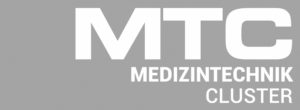Thaumatec had experienced a lot about the steps during the deployment of an IoT innovation and the prototyping phase. Most of our prototype projects have been done in an iterative and often rapid way.
There are several methods of industrial design prototyping: iterative, parallel, competitive, and rapid. These different methods of prototyping produce varying models of proof-of-concept during the product development process.

Iterative
Iterative prototyping involves creating a prototype from the product design, testing it for usability and functionality, and then revising what didn’t work. After testing has concluded, the research team will design a new iteration and manufacture it for testing. The old iteration is then thrown out or set aside. Iterative prototyping is practical and allows for quick identification of challenging design problems but can be expensive and wasteful depending on the number of iterations required.
One kind of iterative prototyping is evolutionary prototyping, that removes the need for more than one iteration. The idea behind evolutionary prototyping is to gradually refine the first iteration as improvements are identified based on incoming feedback. Eventually, the first and only prototype becomes the final product after extensive machining and revising.
Rapid
Rapid prototyping is a more recent product design testing method that incorporates some aspects of the iterative process. This method is fast and accessible for product designers who can access CAD software and 3D printing technology in-house. Rapid prototyping utilizes innovative technologies—CAD software and 3D printing—to create seamless data transfer from computer to printer. This method is an affordable way to run usability and functionality tests on newly printed mockups.
Previous methods might take a few days to manufacture and compare iterations of the product depending on fabrication technology and communication requirements. Rapid prototyping is a process that could be minimized to a daily cycle where the new product iteration is designed/revised during the day and then printed overnight.
Parallel
On the other hand, parallel prototyping is a concept-based method where several design concepts are compared concurrently. Multiple designs are drafted and then compared to find the best versions before a physical prototype is manufactured. This method promotes creativity and conceptual ideation. Parallel prototyping can be expensive due to a large number of contributing factors.
Subsequently, there is a parallel prototyping version — competitive prototyping — where multiple design teams develop concepts independently. Competitive prototyping is useful for larger projects that have the potential for higher risk factors.
Competitive
Competitive prototyping is an approach in which two or more competing teams (organizations) develop prototypes during the early stages of a project (acquisition or procurement phase.
The competing prototypes are compared, and ultimately the one that best addresses the issue(s), problem(s), or challenge(s) is chosen).

Prototype PoC projects can be handled like this:
Here are the main steps, we found out, which are the most important ones in this method.
How come from the idea to a concept ?
Every IoT project starts with an idea. Nowadays for producers it is possible to quickly turn those ideas and concepts into something real.
For the concept it is important to have the most important requirements and key data is defined and checked, the details can be fine tuned later.
In many cases, a cheap processing board like Raspberry Pi or Arduino is enough for this purpose. For Connectivity often a physical cable to link the sensor to an standard IoT gateway is enough, although Wi-Fi, LoRa, NB-IOT or other radio technologies are essential already needed and the more likely option. The selection of the right connectivity technology is very important as it influences the IOT system behaviour and bottlenecks should be found, even in simple configuration.
Which Prototype variant to choose ?
Often rapid prototyping is used as it has become easier and cheaper. The Chinese manufacturers are even building in volumes of one.
But once you bring the proof of concept from your lab to the field can you really rely on the solution and chosen connectivity? Depending on the environment, you might think cellular connectivity is your best option but the investor or client does not like to have monthly fees and costs. So maybe to invest in a private LoRa network. Anyway it is better to find such conditions out as early as possible.
So better to have an approach which takes more time but allows more iterations and prevents failure.
Iterate and gain confidence in your idea
If you have already made the proper investigation of the connectivity in Step 1 or you did a fine tuning in Step 2 then you have in most cases no big adaptations in front of you.
The most important questions are: can your chosen connectivity handle all issues around security, authentication, authorization, safety, performance, reliability, costs, useful feature set and final production ?
But in case you still find out that there are gaps due to changing target and adapted ideas you run in new questions very fast and have to tune the plans and design.
Define scenarios, field tests and proof confidence
By design, IoT devices are constrained which implies limited processing power, storage and bandwidth.
Where you plan to physically deploy will be a factor: if you aim to put a miniature computer on every streetlight, it isn’t practical to visit every one of them every Tuesday to install a patch. Or, if you fit a sensor in the road which is then embedded under concrete, you only have one time to get it right.
Important for scale | do’s and dont’s
If you want to ship your product all over the world, you have to take steps 1,2 and 3 already. Care that you’ve built in connectivity that works for your global application and markets.
Here the topics are e.g. in case of cellular connectivity useability of SIM Cards in certain countries:
- In Saudi Arabia, and a U.S. SIM won’t necessarily work in France.
- In some of the biggest growth markets, Saudi Arabia, Turkey and Brazil, governments don’t permit global or permanent roaming.
- In case of LPWAN systems the question is are in the target markets public LoRa providers or do you have to create a private network.
- Similar constraints are maybe due to country specific regulations in the field of confidentiality, security and safety.
The model now which applies to connectivity, to let you link services and IOT-devices over the internet at industrial scale that you can start small and then flex your network as you go through the subsequent steps.
When considering what technology to enable your IoT project to scale the network connectivity you need to look to the models developed for infrastructure as a service and computing elasticity.
For establishing private connectivity networks use mesh solutions as Wirepas or ZigBee to prevent costs on network or spot planning or look for technologies that can automate the set-up of an IoT network topology via simple API calls and that remove the manual, time consuming bespoke steps.
Consider technologies that can aggregate different bearer networks so that you can mix and match multiple different connectivity types, and avoid lock-in from one single communication service provider.











